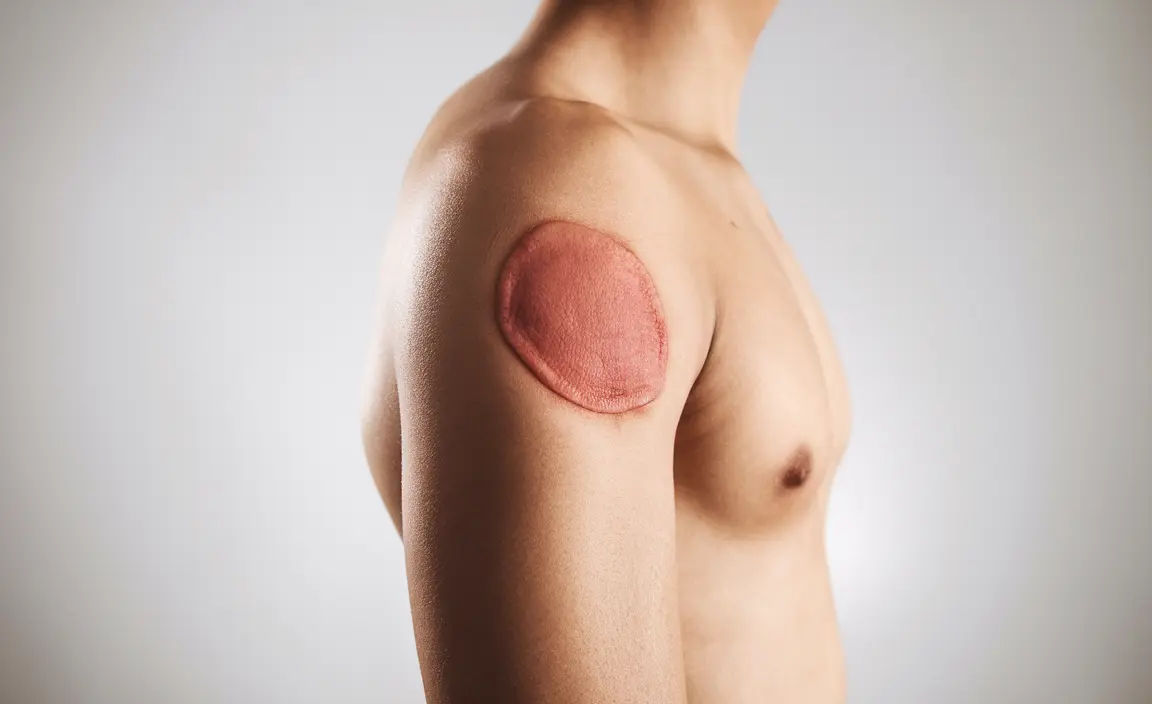If you were born before the 1970s or served in the military, you might have a distinctive circular scar on your upper arm from the smallpox vaccine. This vaccination mark is a common sight among older generations and continues to spark questions about its appearance, causes, and potential treatments. Understanding this unique scar can help put your mind at ease about its presence and what it represents.
The smallpox vaccine scar represents a crucial moment in medical history, marking humanity's successful effort to eradicate one of the deadliest diseases in history. Today, we'll explore everything you need to know about this distinctive mark, from its formation to options for those seeking treatment.
How the Smallpox Vaccine Scar Forms
The smallpox vaccination process was unique compared to modern vaccines. Instead of using a standard needle injection, healthcare providers used a special bifurcated needle to prick the skin multiple times in a small area. This technique, known as scarification, deliberately created a local infection that would trigger an immune response.
As the vaccination site healed, it typically formed a small, round scar about the size of a dime. This scarring process was actually considered a sign of a successful vaccination, indicating that the body had mounted an appropriate immune response to the vaccine.
Characteristics of Smallpox Vaccine Scars
The typical smallpox vaccine scar has several distinctive features:
- Round or oval shape
- Usually 1/4 to 1/2 inch in diameter
- Slightly depressed or pitted appearance
- Located on the upper arm
- Lighter in color than surrounding skin
In some cases, the scar may appear more pronounced or raised, particularly in individuals prone to keloid formation. The final appearance can vary significantly from person to person, depending on individual healing patterns and skin type.
Comparing Vaccine Scars
The smallpox vaccine scar differs from other vaccination marks, such as the BCG (tuberculosis) vaccine scar. While both can leave visible marks, the smallpox scar tends to be larger and more distinctive. The BCG scar is typically smaller and may be less noticeable over time.
Treatment Options for Vaccine Scars
For those concerned about the appearance of their smallpox vaccine scar, several treatment options are available:
Non-Surgical Treatments
- Topical scar reduction creams
- Silicone sheets or gels
- Chemical peels
- Microdermabrasion
Medical Procedures
- Laser therapy
- Dermabrasion
- Surgical revision
- Dermal fillers
The effectiveness of these treatments can vary, and it's important to consult with a dermatologist to determine the most appropriate option for your specific case.
Frequently Asked Questions
Why does the smallpox vaccine leave a scar, and is it normal to have one?
The smallpox vaccine leaves a scar because of the vaccination technique used, which involved multiple punctures in the skin. It is completely normal to have this scar, as it was actually considered a sign of successful vaccination.
What causes some smallpox vaccine scars to be bigger or raised, and who is more likely to develop keloids?
Larger or raised scars can develop due to individual healing patterns and genetic factors. People with darker skin tones, particularly those of African, Asian, or Hispanic descent, are more prone to developing keloid scars. Hormonal factors and age can also influence scar formation.
How is the smallpox vaccine scar different from other vaccine scars, like the BCG vaccine scar?
The smallpox vaccine scar is typically larger and more distinct than the BCG vaccine scar. It usually appears as a round, slightly depressed mark, while the BCG scar tends to be smaller and may fade more over time.
Can you get rid of a smallpox vaccine scar, and what treatments are available for scar removal?
While complete removal may be challenging, various treatments can improve the scar's appearance, including laser therapy, dermabrasion, topical treatments, and surgical revision. Success rates vary depending on the individual and chosen treatment method.
What does a smallpox vaccine scar look like, and where is it usually found on the body?
The smallpox vaccine scar typically appears as a round, slightly depressed mark about 1/4 to 1/2 inch in diameter. It's usually located on the upper outer arm and may appear lighter than the surrounding skin.




